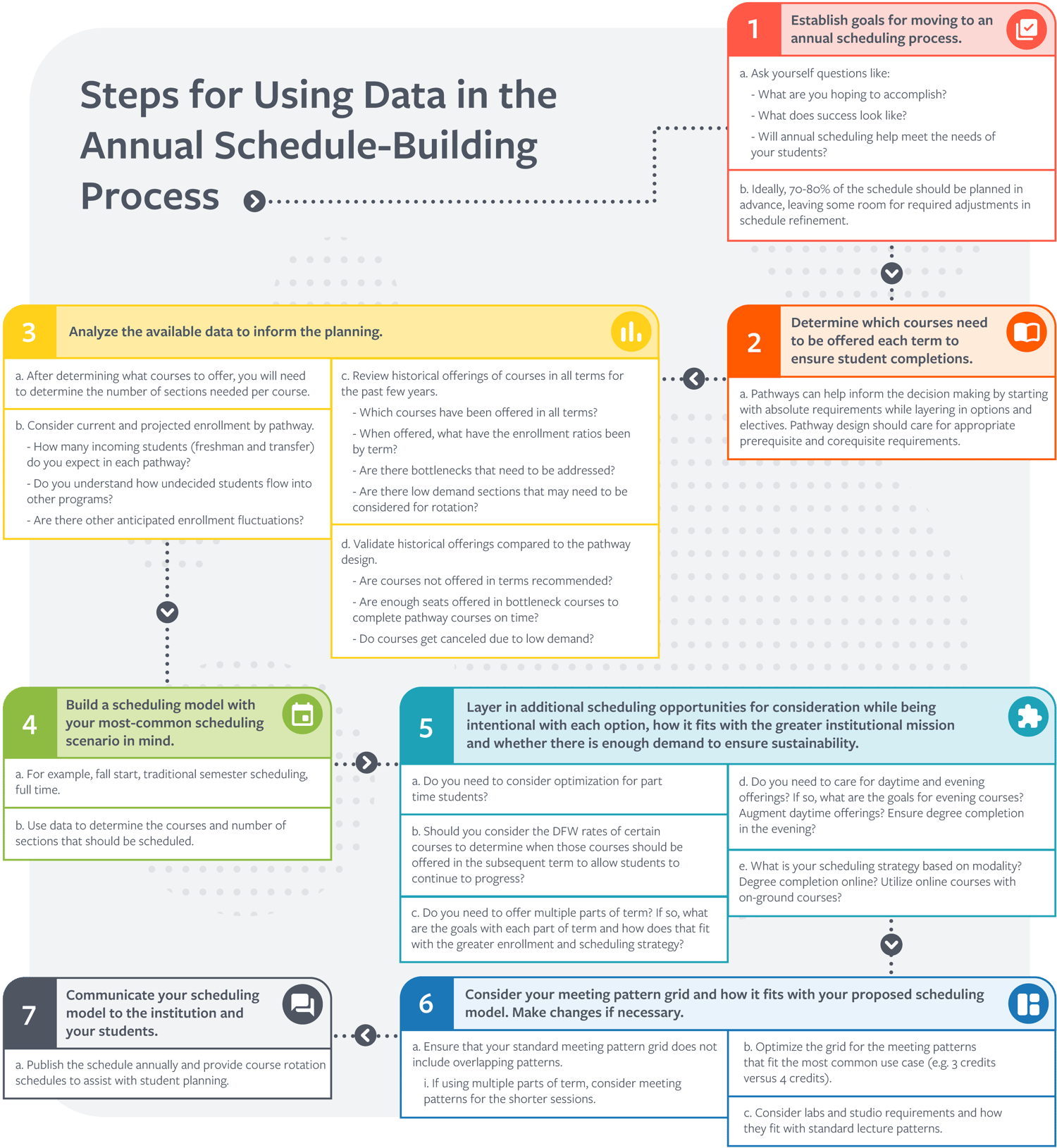
8 Minute Read
What the Bases Look Like for an Annual Schedule
When discussing scheduling practices with institutions across the country, one of the first topics for consideration is the idea of building schedules for the future as opposed to a term-by-term basis. In the results from an AACRAO 60-Second Survey on Class Scheduling Practices and Technology, about twenty percent of those who responded said they scheduled a year in advance. Sixty-two percent indicated they scheduled one term in advance or less. As more and more institutions indicate interest in annual scheduling or building a schedule for two years, the industry needs to consider how to best provide schedules for the future.
As the number of post-traditional students in our institutions increase, the need for standardization of scheduling is also on the rise. Post-traditional students need to be able to balance work, family, and education, and the American Council on Education reports that approximately 60% of students fall into this category. In addition to the currently enrolled post-traditional students, the National Student Clearinghouse Research Center noted that thirty-six million Americans have some postsecondary education but no degree completion. In fact, many traditional students have similar needs to balance work and their education. The National Center for Education Statistics reported in May 2020 that forty-three percent of full-time students and eighty-one percent of part-time students also work. As institutions understand the students they are serving, they must consider opportunities to structure scheduling to meet the competing demands that students face.
The prospect of moving from term scheduling to annual scheduling may seem daunting. There are several aspects of culture, infrastructure, and business process that need to be considered. One of the most frequently asked questions is how to use data to inform the annual schedule-building process. The steps below are designed to get you started. They outline a strategy to integrate your current data into the schedule design and refinement process.


Laura Kelley
Vice President, Solutions Strategy
Ad Astra
Laura Kelley is Vice President, Solution Strategy at Ad Astra. With over 20 years of experience in higher education, she works with institutions and Ad Astra personnel to ensure that products and services are in alignment with institutional needs. Over her 10-year tenure at Ad Astra, Laura has worked directly with clients implementing Platinum Analytics, served in product management, and consulted with hundreds of clients on course scheduling and student success. Laura holds a B.A. in English and American Studies from the University of North Carolina at Chapel Hill and a Master of Project Management from Western Carolina University in Cullowhee, NC. Before coming to Ad Astra, she worked at the University of North Carolina at Greensboro in the Registrar’s Office and Enrollment Services.

Ad Astra is higher education’s solution partner in managing the academic enterprise. Partnering with more than 500 colleges, universities, and systems nationwide, Ad Astra helps improve stewardship of instructional resources, streamline student access to courses, and accelerate student completions.